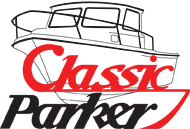bobkat":np4jvqc7 said:
Any help / suggestions would be greatly appreciated. Thanks!
GREAT info from MaxOut. I myself have the Shakespeare Art1 VHF power/SWR meter. But from my experience, you might see remarkable improvement in performance by changing out your existing PL259 connectors to be "centerpin" gold-plated types, see below.
*********
From a previous posting of mine ... *********
VHF BASICS:
Just remember guys, with VHF radio transmissions, it is all about HEIGHT! The transmission range for VHF marine radios is effectively limited by the curvature of the earth and antenna height, so
the higher you mount your antenna on your boat, the further you will be able to communicate.
Since VHF transmissions are line-of-sight, there is a mathematical equation to help determine the line-of-sight distance, but this calculation needs to account for both the transmitting and receiving boat, generally taking the measurement from the top of the antenna to the waterline. The equation is the square root of (1.42 x antenna height).
Examples:
* Boat with 12’ antenna, the line-of-sight distance to the horizon is ~4.2 miles
* Boat with 18’ antenna, the line-of-sight distance to the horizon is ~5 miles
* Land-based station with 100’ antenna, their line-of-sight distance to the horizon is 12 miles
The maximum
theoretical distance that the two boats can communicate is 9.1 miles (4.2 + 5). The maximum theoretical distance the boat with the higher antenna can communicate with the tower is 17 miles (12 + 5).
Antenna gain will not increase this distance, however it will make a marginal signal stronger. Environmental conditions, islands that obstruct the line-of-sight, weather conditions such as rain or fog, can all affect the distance the signal travels. While there is temporal weather phenomena such as atmospheric ducting that can act like a conduit for longer distance communications, it is not reliable. Even though you may clearly hear such a ducted transmission, you may be able to be heard or engage in effective 2-way communication.
Recommendations for VHF Set:
In recent Powerboat Reports testing, Standard Horizon units outperformed Icoms as a whole. BOE Marine (
www.boemarine.com) sells the S-H
Quest model with DSC (emergency calling) and position request/send for ~$140 in white or black. You can get as fancy as you want. Now if running a newer technology GPS with ability to read the “e” part of a coded DSC sentence, you may want to check for compatibility with your GPS maker. Some have the ability to display on the GPS screen (automatically or it will prompt you to accept) the boat asking for or sending out a DSC“e” message. Did I lose you

there?
Recommendations for VHF Antenna:
I tell you guys, I have one of those VHF test (SWR) meters and have tested over 30 boats for those at the boat club where I’ve been boating for 40+ years.
Without a doubt, THE BEST PERFORMING radios were using 8’
Shakespeare Galaxy antennas of either the 5225-XT ($97) or 5225-XP ($109) series. There is also a $129 FLT model with advanced filtering capability that is said to eliminate more static and to provide a clearer receiving signal. Now those prices are from BOE Marine again and they are about the lowest prices you will find anywhere! I have a marine wholesale account and from my jobber, the cheapest price I can get on the XT antenna above is $125.
The output power on the best antennas I've tested was > 25-watts as per the test meter and all also had the lowest SWR readings of all antennas and VHF sets tested. The top 5 performers were all using Shakespeare Galaxy model VHF antennas, with 4 sets being Std-Horizons and 1 an Icom.
Now, here is the best part. All of the top set/antennas tested were using the new gold-plated solderless “Centerpin” connections also made by Shakespeare, see below. If happy with your existing set, but not sure all transmissions are heard, by all means try these connectors, they’re < $10 and I’ve seen them improve marginal performance to very good performance (as tested by the in-line test meter). I ended up fixing/repairing sets/antennas or wiring on 6 boats and most just needed the new connector or antenna.






